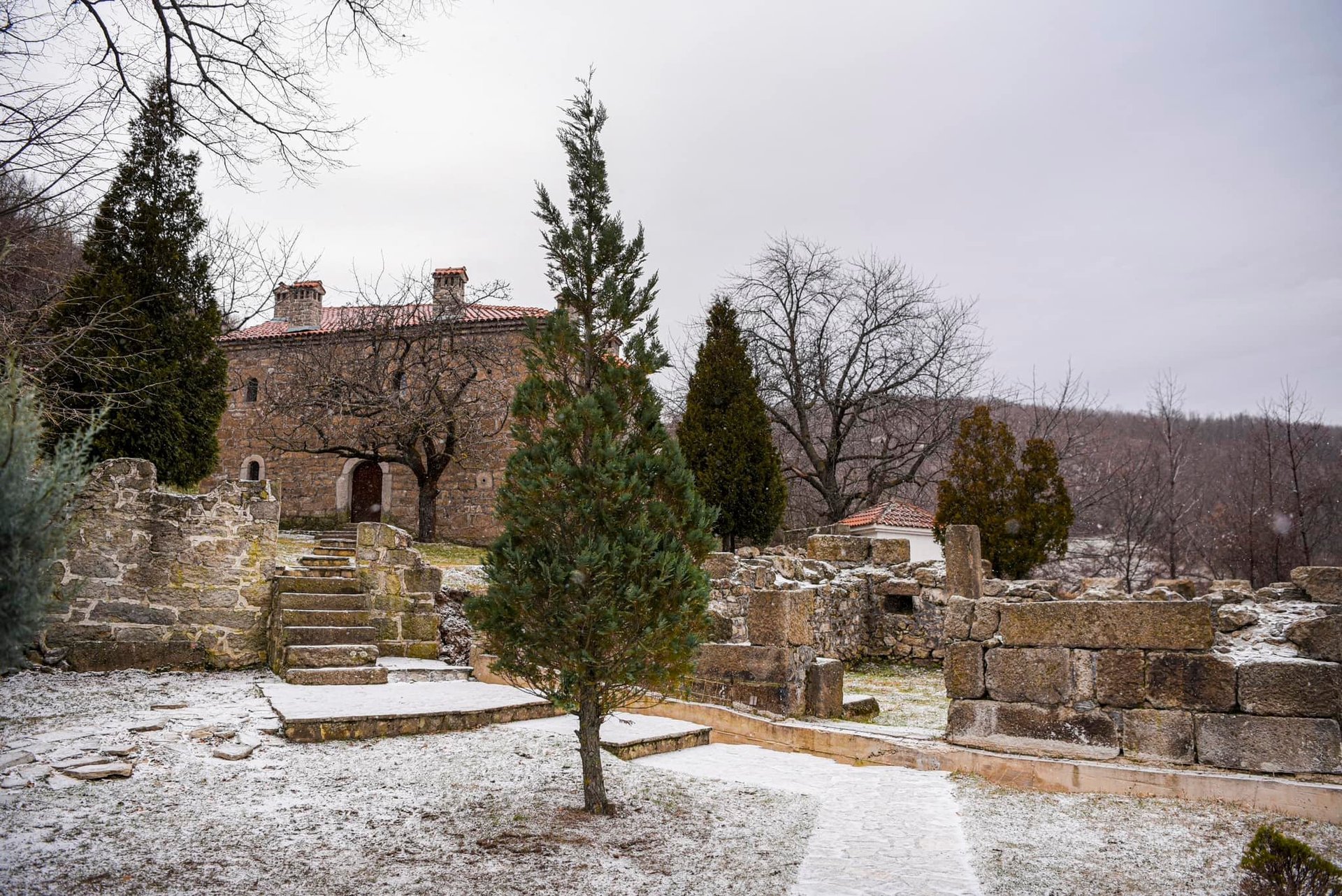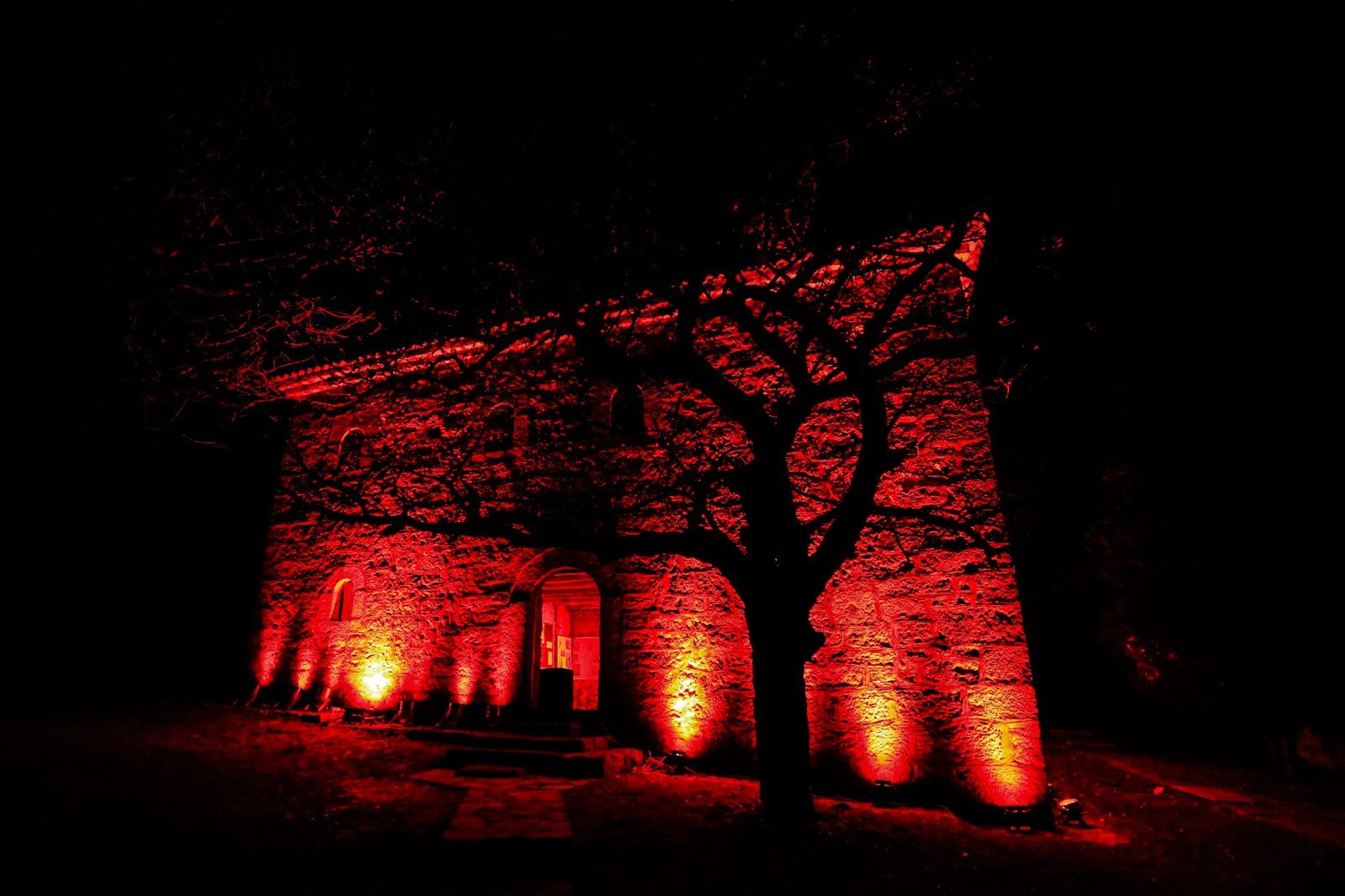


The absence of the eastern surrounding wall can be explained by the simple reason that this part of the complex was on a steep slope and suitable for observation. The courtyard of the building is surrounded by a wall made of carved stones, with a turret and a chimney in the wall. The complex consists of two entrances: The main entrance was used for external guests and the other is the economic entrance that led to the economic courtyard. Access to the complex is quite interesting due to the organization of the contents and the free conception of the buildings (there are traces of the physical division of the courtyard between these two central buildings). On the inner plateau of the surrounding walls were built the towers: “The Men’s Chamber” and “The Fire House”. In the courtyard of the current school there were other accompanying buildings (barn, barn, cowshed, etc.) of the complex in question, which now no longer exist.
The “House of Fire” tower is in its original state, with a three-pitched roof and covered with traditional ceramic tiles. The base of the tower is square. The walls are massive stone. The ground floor has two entrances, one facing the other. The main entrance served for communication with the “Men’s Chamber” tower, while the economic one served with secondary facilities. There are two types of openings: stone windows that have only the inner arch, and round frenzi with a truncated cone cut. The dormer window on the western facade has small openings formed in a massive block, as well as two windows on the southern facade. The floor consists of four niches, three of which are bedrooms, each of which has its own fireplace, while the fourth niche is the divanhana niche. In the divanhana there is also the dormer window (stone gallery), ablution – dining room and toilet which protrudes from the northern wall. The mesolithic construction, the roof construction and the stairs are made of wood. The mesolithic construction of the ground floor is created so that the main beam, which is supported by a wooden pillar supported by a stone block, extends along the east-west axis and the secondary beams in a transverse position are arranged parallel to each other. The same solution is also in the mesolithic construction of the first floor, but with the opposite order. From the “Oda e Burrave” tower, only ruins remain today. The masonry structure is regular with the use of hewn stone blocks. Although largely destroyed, the entrance in the eastern part and the position of the stairs on the same side (the internal single-wing stairs) are noticeable. The ground floor is a space. In this space, a rectangular-shaped frenzy is noticeable, so we come to the conclusion that this space was almost closed with several holes that had the role of ventilation of the ground floor. The “Fire House” tower is presented in its original condition. . The men’s room, once destroyed between World Wars I and II, and the “Fire House” tower were conserved and restored during 2003 – 2004. The sanitary facilities in the complex are not of the time, as they were built when the “Fire House” tower was transformed into a center of education and training for the surrounding residents, at the beginning of the 20th century. The complex is state-owned, therefore during a period of time (20th century), this complex, in the absence of a school building, served as a primary school, while a new school building was built in the economic part of the complex. Today, the tower complex functions as a museum, where the cultural and historical values of the prominent figure of Isa Boletini are presented. In 2013, emergency measures were taken, investor MCYS. In 2015, the remains of Isa Boletini were exhumed, and on this occasion, the MCYS took steps to work on the cemetery.
Historical and chronological development.
The towers have been destroyed three times since the time of construction. During 2003-2004, the remains of the walls of the Tower – the Men's Chamber, have been conserved, while the “Fire House” was conserved and restored.
Restoration and conservation works at the Fortification Complex of Isa Boletini Towers (February, 2004), Investor MCYS/Prishtina.
- Restoration and conservation works at the Complex of Isa Boletini Towers (November, 2013), Investor MCYS/Prishtina.
- Works on the arrangement of the cemeteries at the Complex of Isa Boletini Towers (May, 2015), Investor MCYS/Prishtina The complex of Boletini towers is located in the village of Boletini, Municipality of Zveçan. Fortified family residence of the Boletins - the towers were built at the end of the 19th century by Albanian folk craftsmen with local materials.
The towers were built by Isa Boletin, one of the most prominent personalities of this region. The complex with rural towers as residential buildings and fortifications has social, cultural-historical and architectural values in the region. The natural landscape of the location of the complex is a peculiarity with extremely high values.
The towers have a square base with a massive structure built of hewn stones.
The emotional connection of the community with the object is special and represents a value of the community's identity. The preserved Men's Chamber has preserved its authenticity and integrity. While the Fire House preserves the pillar on the ground floor which, through the profiled cushion, creates stability for the floor of the first floor and reinforcement for the ground floor walls.
This object adds value to the Shala e Bajgore area, and the region
- The tower complex has a high potential for cultural tourism, information.
The men's chamber in the form of a preserved ruin preserves its authenticity and integrity
In the "House of Fire", the original element that has resisted destructive factors, is the pillar on the ground floor, which through the profiled cushion creates stability to the floor of the first floor and reinforcement of the ground floor walls.
The protection of the asset, legal and technical measures, policies, as well as the
Asset Management Plan, are based on the existing Law on Cultural Heritage in Kosovo and its seven
Regulations, international conventions, and seven guidelines issued by the joint European Union/Council of Europe project - Support for the Promotion of Cultural Diversity in Kosovo (PDDK).
Law on Specially Protected Areas / LZVM, (Law: No. 03/L-039; dated 04.06.2008)

